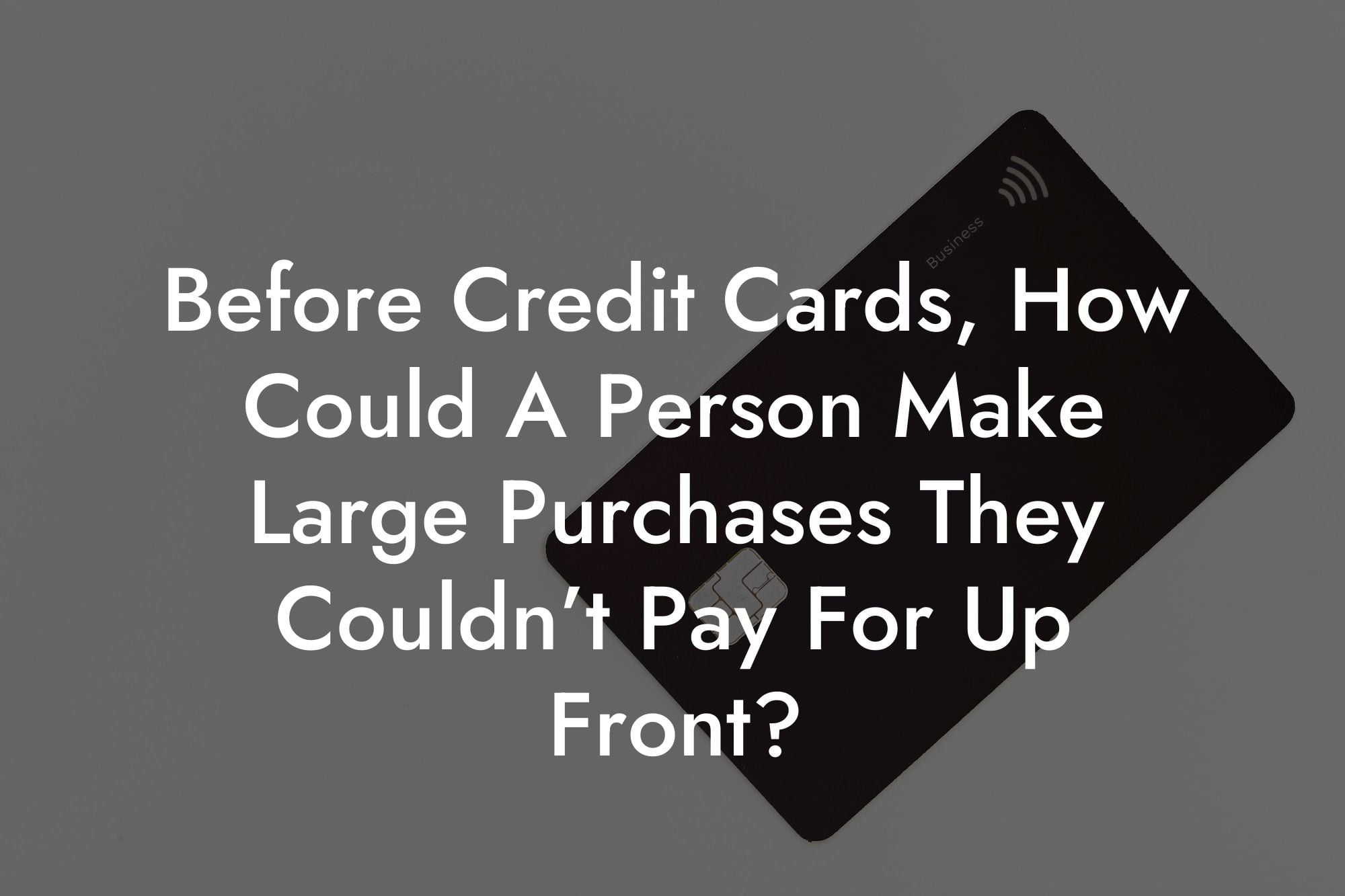Have you ever wondered how people managed large purchases before the invention of credit cards? Like buying a home, a car, or even expensive appliances? Imagine a world without credit cards – the convenience and flexibility they offer today was not always the norm. In this article, we’re going to take a trip down memory lane and uncover the methods people used for financing large purchases before credit cards emerged as a popular option. So buckle up, Flik Eco readers, as we whisk you back to the time before “swipe now, pay later” was a thing!
Quick Links to Useful Sections
Before Credit Cards, How Could A Person Make Large Purchases They Couldn’t Pay For Up Front Table of Contents
Installment Plans
Before credit cards, one popular method of financing large purchases was through installment plans. These allowed a buyer to make a down payment and then pay for the remaining balance in regular installments, usually monthly, until the total amount was paid off.
Layaway Plans
Another method used for large purchases was layaway plans. Unlike installment plans, which required the buyer to pay off the item over time while using it, layaway plans allowed customers to reserve an item by making a down payment, and then pay for the item in installments. Once the payment was completed, the customer could take the item home. This method was popular for items like clothing, furniture, and appliances.
Personal Loans and Bank Financing
Personal loans and bank financing were another means people used to make large purchases. These required borrowers to apply with a lending institution, provide collateral, and then pay back the loan with interest. Some banks would also finance specific purchases directly, such as automobiles and homes, through loans with the bank as the lienholder.
Savings and Loan Associations
To facilitate large purchases like homes, savings and loan associations were established in the early 20th century. These institutions would help individuals save money towards a specific goal, such as a down payment on a home, while also offering loans to make the purchase possible.
Deferred Billing
Looking for an option to buy now and pay later? Deferred billing was quite popular before credit cards became widespread. This allowed customers to buy something they couldn’t afford at the time and then pay off the balance at a later date, usually within 30 to 60 days. It was often used for things like furniture and appliances, but deferred billing was less common for more significant purchases, as those typically required loans or payment plans.
Before Credit Cards, How Could A Person Make Large Purchases They Couldn’t Pay For Up Front? Example:
Let’s transport ourselves back to the 1950s. Imagine a young couple, Jane and John, who just got married and are looking to buy a new refrigerator for their first home. With no credit cards to rely on, they have three main options:
1. Layaway Plan: Jane and John could approach their local appliance store and ask to reserve a refrigerator through a layaway plan. They would make a down payment of, say, $20 and then pay the remainder of the cost in installments over the next few months. Once they made their final payment, they could take their new refrigerator home.
2. Installment Plan: Instead of the layaway option, Jane and John could choose to purchase their refrigerator outright and pay for it in monthly installments, with interest added. This would allow them to set up their refrigerator at home without waiting to complete the payment.
3. Bank Loan or Personal Loan: If they wish, Jane and John could also approach their bank or a lending institution for a loan to cover the cost of the refrigerator. They would need to provide collateral, such as their car or home, and then pay off the loan in installments over an agreed-upon term.
We’ve come a long way from the age of layaway plans and installment financing to our convenient credit cards today. However, it’s essential not to take our modern financial tools for granted and be responsible when using credit to avoid debt woes. Remember, financial wisdom never goes out of style!
If you enjoyed this trip down memory lane, don’t forget to share this article with friends, and explore other Flik Eco guides to help you make better financial decisions. Stay informed and stay savvy, Flik Eco readers!













